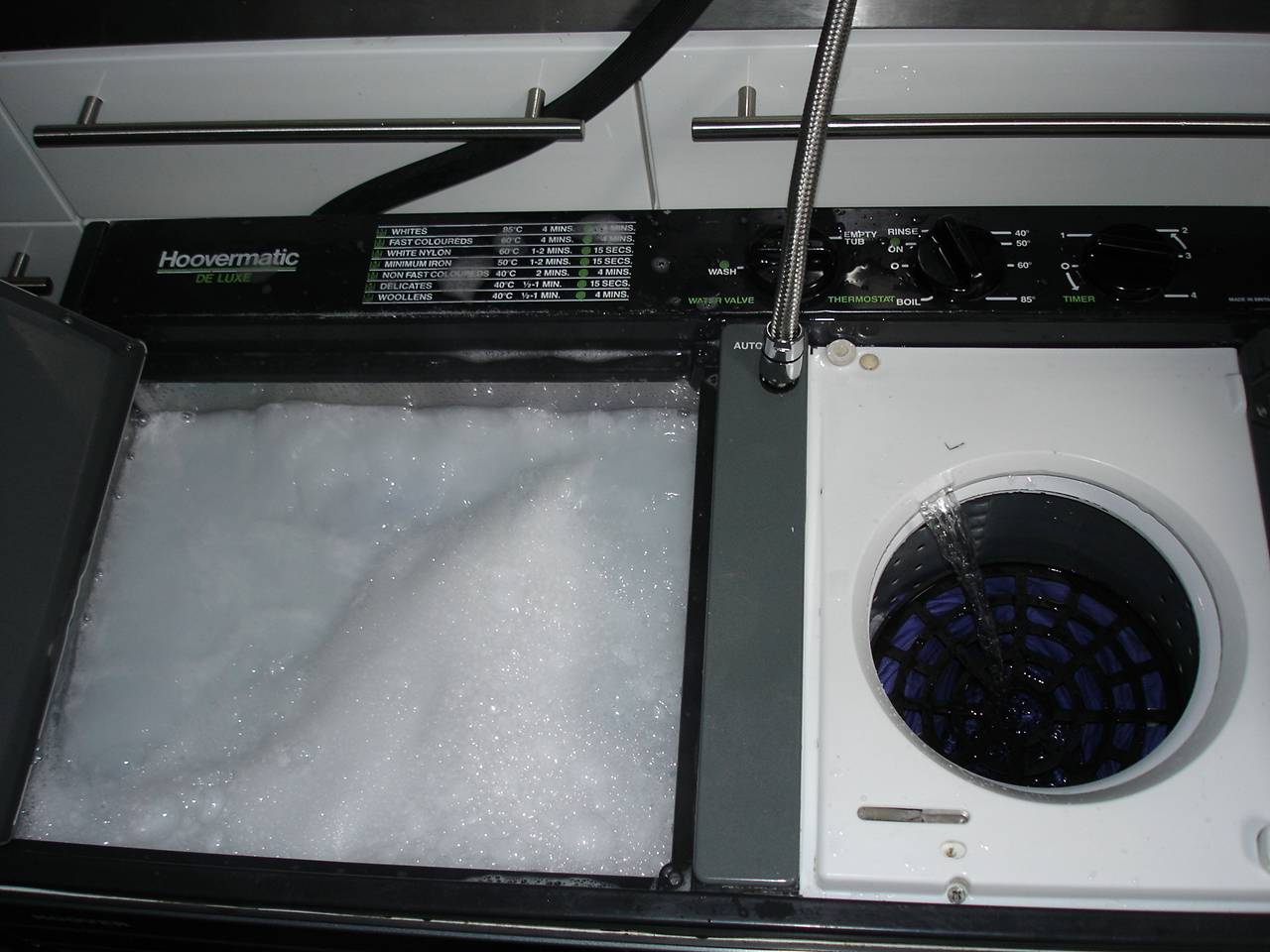|
Thread Number: 527
I dream of a twin-tub |
[Down to Last] |

|
Post# 49323 , Reply# 1 11/16/2004 at 21:10 (7,191 days old) by arrrooohhh  (Sydney Australia) (Sydney Australia) |
||
|
Twin tubs are still made my many Asian manufacturers such as LG, Daewoo and Samsung. Here is a link to the Samsung twin tub. Samsung and NEC(daewoo made) both sell twinnies in Australia, though I dont know how many people actually buy them. CLICK HERE TO GO TO arrrooohhh's LINK | ||
Post# 49334 , Reply# 2 11/17/2004 at 05:36 (7,191 days old) by wilkinsservis  (Melbourne Australia) (Melbourne Australia) |
||
re twintubs | ||
Post# 52282 , Reply# 9 1/2/2005 at 21:37 (7,144 days old) by appnut  (TX) (TX) |
||
|
| ||
Post# 52390 , Reply# 12 1/4/2005 at 04:55 (7,143 days old) by chestermikeuk  (Rainhill *Home of the RailwayTrials* Merseyside,UK) (Rainhill *Home of the RailwayTrials* Merseyside,UK) |
||
Water Usage
Twinnies are great to use and here in UK housewifes here where among the last in the west to take advantage of autos etc... Its true you can use the water again,(have never known anyone to ditch the water after each load)most machine here wash around 6lbs but in my opinion the only full weight of 6lbs would have to be absorbant cotton loads etc... The later Hoover machines have linked semi auto technology, auto wash timer linked to thermostat and auto rinse facility, the pic is of my latest Hoover T5054 twinny in action, which is my favourite later twinny with the black fascia. Will be interested to see how the debate continues as you start to use more of the large capacity front loaders with fast spins etc and lower water consumptions.. I did a test with my Titan washer (similar to Whirlpool Duet) it takes a 7KG load and user pump shower spray technology, very low water consumption, and four rinses....I put the outlet pipe into an auto top loader and the full water usage didnt come to half way in the top loader... This load would have taken at least six loads in a twinny with considerable water usage. I hate to say it cos I love taking the twinnys for a run, but overall eco usage it would have to be the new range of front loaders for max cleanness with minimum water /powder/electricity energy consumption.... But there is still only one machine that you can use to boil with, wash rinse and spin at the same time with.....alltogether now!!!!!...... SERVIS....Who Better... CLICK HERE TO GO TO chestermikeuk's LINK 
| ||
Post# 52423 , Reply# 13 1/4/2005 at 16:57 (7,143 days old) by gansky1  (Omaha, The Home of the TV Dinner!) (Omaha, The Home of the TV Dinner!) |
||

I usually add a little fresh water with each load change in a twinnie or wringer, as well as a little bit of detergent. If you ask someone who used a wringer washer - or a washboard and boiler-tub, the hot (& clean) water theory will hold true for "whites first" washing as well as the fact that many times the water had to be carried so you used it as much as possible before carrying it to the garden to water the vegetables. My grandmother, married in 1930, used a Maytag "Gray Ghost" wringer washer with a gas engine, heated the hand-pumped and hand-carried water on the wood cookstove in the kitchen. Most of the time, the whites were put to soak the night before washday (Monday) and then boiled prior to washing - especially if washing by hand on a washboard. The Maytag gas powered washer was considered the ultimate in luxury for a farm-wife, born in 1906 she had never known any automation or relief of drudgery ;-) Electric service was not available until the late 30's in their rural farming community but by then, they had lost the farm and most everything else including their first daughter to lukemia during the depression and midwestern "Dust Bowl" devastation. Hard life... | ||

 Comes to the Rescue!
Comes to the Rescue!